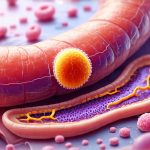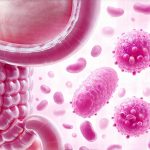Our digestive system is a remarkably complex ecosystem, constantly working to break down food, absorb nutrients, and eliminate waste. A key component often overlooked in maintaining optimal digestive function is dietary fiber. While many people understand fiber is “good for you,” the nuances of different fiber types – soluble versus insoluble – are frequently misunderstood. These two categories aren’t simply different substances; they behave very differently within the gut, impacting everything from stool consistency and bowel regularity to nutrient absorption and the composition of our gut microbiome. Understanding these differences empowers us to make informed dietary choices that support a healthier digestive system overall.
Fiber isn’t digested by the body – this is what makes it so valuable. Instead, it passes relatively intact through the digestive tract, contributing to numerous health benefits along the way. The specific effects depend largely on whether the fiber is soluble or insoluble, leading to distinct physiological responses. A well-rounded diet incorporates both types of fiber, promoting a balanced and thriving gut environment. Insufficient fiber intake is linked to various digestive issues, including constipation, diverticulitis, and even an increased risk of colon cancer, highlighting its crucial role in maintaining long-term health. Issues like these can be exacerbated by common medications.
Soluble Fiber: The Gelatinous Guardian
Soluble fiber gets its name from its ability to dissolve in water, forming a gel-like substance in the digestive tract. This process slows down digestion, which can be incredibly beneficial for blood sugar control and cholesterol management. Foods rich in soluble fiber include oats, barley, apples, citrus fruits, carrots, peas, beans, and psyllium husk. Unlike insoluble fiber, which primarily adds bulk to stool, soluble fiber actively alters the digestive process itself. This gel-forming property isn’t just about slowing things down; it impacts how nutrients are absorbed and influences the gut microbiome in unique ways.
The slower digestion facilitated by soluble fiber means that glucose is released into the bloodstream at a more gradual pace. This prevents spikes in blood sugar levels, which is particularly important for individuals managing diabetes or insulin resistance. Similarly, the gel-like substance can bind to cholesterol in the digestive tract, preventing its absorption and helping to lower LDL (“bad”) cholesterol levels. This effect contributes significantly to cardiovascular health.
Furthermore, soluble fiber serves as a prebiotic, meaning it provides nourishment for the beneficial bacteria residing in our gut. As these bacteria ferment soluble fiber, they produce short-chain fatty acids (SCFAs) like butyrate, propionate, and acetate. These SCFAs are vital for gut health; butyrate, for example, is a primary energy source for colon cells and helps to reduce inflammation within the digestive tract. A thriving population of beneficial gut bacteria, fueled by soluble fiber, is linked to improved immunity, mood regulation, and overall well-being. The impact of diet diversity on this process cannot be overstated.
Insoluble Fiber: The Bulk Builder & Gut Mover
Insoluble fiber, as the name suggests, does not dissolve in water. Instead, it remains largely intact as it moves through the digestive system, adding bulk to stool and speeding up the passage of waste through the intestines. Excellent sources of insoluble fiber include whole wheat bread, bran, vegetables like broccoli and cauliflower, nuts, seeds, and fruit skins. It’s often described as the “roughage” component of our diet, crucial for maintaining bowel regularity and preventing constipation. This type of fiber is particularly helpful in keeping things moving smoothly through the digestive tract, reducing the risk of blockages and promoting a healthy elimination process. Long-term constipation can be significantly improved with adequate insoluble fiber intake.
The bulking effect of insoluble fiber stimulates intestinal contractions, helping to move waste along more efficiently. This can alleviate symptoms of constipation and reduce pressure within the colon, potentially lowering the risk of developing diverticulitis (inflammation or infection in small pouches that can form in the colon). It’s important to note that simply increasing insoluble fiber intake isn’t always enough; adequate hydration is also essential for this type of fiber to function effectively. Without sufficient water, the bulk can actually become difficult to pass and potentially worsen constipation.
Insoluble fiber also plays a role in gut health beyond just regularity. By quickly moving waste through the colon, it reduces the amount of time potential carcinogens spend in contact with the intestinal walls, possibly lowering the risk of colorectal cancer. While soluble fiber feeds beneficial bacteria, insoluble fiber helps to create a cleaner and more efficient digestive environment overall. It’s a complementary role that highlights the importance of both fiber types working together.
Optimizing Fiber Intake For Regularity & Gut Health
Achieving optimal gut health isn’t about focusing solely on one type of fiber; it’s about striking a balance between soluble and insoluble sources. Most whole foods naturally contain a combination of both, making a varied diet the best approach. However, understanding your individual needs and adjusting intake accordingly is also important. Individuals prone to constipation might benefit from prioritizing insoluble fiber and ensuring adequate hydration, while those with diarrhea-predominant irritable bowel syndrome (IBS) may find soluble fiber more helpful for slowing things down. The impact of irregular eating habits can also disrupt this balance.
Here’s a step-by-step approach to incorporating more fiber into your diet:
1. Start slowly: Rapidly increasing fiber intake can lead to bloating, gas, and discomfort. Begin by adding small amounts of fiber-rich foods gradually over several weeks.
2. Hydrate adequately: Drink plenty of water throughout the day, especially as you increase your fiber consumption. Water helps soften stool and facilitates its passage through the digestive tract.
3. Choose whole foods: Prioritize unprocessed foods like fruits, vegetables, whole grains, legumes, nuts, and seeds over refined products. These provide a wider range of nutrients in addition to fiber.
4. Read food labels: Pay attention to the fiber content listed on food packaging. Aim for foods with at least 3-5 grams of fiber per serving.
It’s also important to listen to your body and adjust your intake based on how you feel. What works well for one person may not work for another. Consulting a registered dietitian or healthcare professional can provide personalized guidance tailored to your specific needs and health conditions.
The Gut Microbiome & Fiber Fermentation
The gut microbiome – the trillions of bacteria, fungi, viruses, and other microorganisms residing in our digestive tract – is profoundly influenced by dietary fiber. As mentioned earlier, soluble fiber serves as a primary food source for these microbes, particularly through fermentation. This process isn’t just about feeding bacteria; it’s about creating beneficial compounds that support overall health. The SCFAs produced during fermentation are key to this relationship.
Butyrate, the most abundant SCFA in the colon, is essential for maintaining the integrity of the gut lining and reducing inflammation. Propionate plays a role in regulating glucose metabolism, while acetate can influence appetite control and energy expenditure. A diverse microbiome, fueled by a variety of fiber sources, produces a wider range of SCFAs, leading to more robust health benefits. In fact, the composition of our gut microbiome is highly individual and can be significantly altered by dietary changes. The positive influence of exercise on this process should not be overlooked.
This interplay between fiber, fermentation, and the gut microbiome highlights the importance of a prebiotic-rich diet. Prebiotics are essentially food for probiotics (the beneficial bacteria themselves). By incorporating foods like onions, garlic, leeks, asparagus, bananas, and oats into your diet – all rich in prebiotics – you’re actively nurturing the growth and activity of these health-promoting microbes.
Addressing Common Digestive Concerns With Fiber
While fiber is generally incredibly beneficial for gut health, it’s important to address potential issues and individual sensitivities. For individuals with IBS or other digestive disorders, finding the right balance can be tricky. Some people may experience increased bloating, gas, or abdominal discomfort when consuming certain types of fiber. This often stems from an imbalance in the gut microbiome or a sensitivity to specific carbohydrates found in fibrous foods (like FODMAPs).
In these cases, a low-FODMAP diet – which restricts certain fermentable carbohydrates – can be helpful for identifying trigger foods and reducing symptoms. Working with a registered dietitian specializing in digestive health is crucial for implementing a low-FODMAP diet effectively and ensuring adequate nutrient intake. It’s not meant to be a long-term solution but rather a diagnostic tool to pinpoint sensitivities.
Another common concern is fiber deficiency. Many Western diets are significantly lacking in fiber, leading to constipation, reduced gut diversity, and an increased risk of chronic diseases. Increasing fiber gradually and prioritizing whole foods can help address this issue. Remember that hydration is key, and listening to your body’s signals is paramount. Ultimately, a personalized approach – guided by healthcare professionals and informed by individual needs – is the most effective way to harness the power of fiber for optimal gut health and digestive regularity. Furthermore, understanding antibiotics impact on your microbiome can help inform your recovery strategy.
Additionally, be mindful of how cold beverages might affect your digestion alongside fiber intake.


















